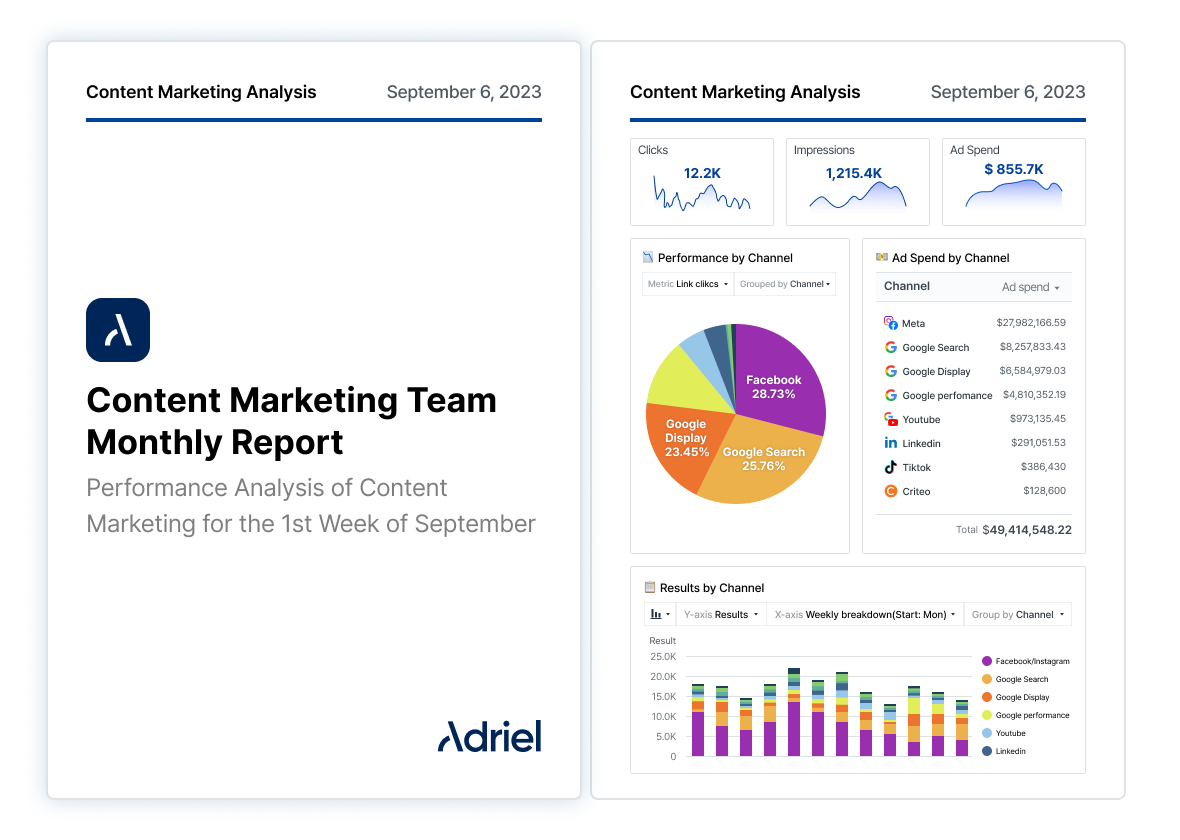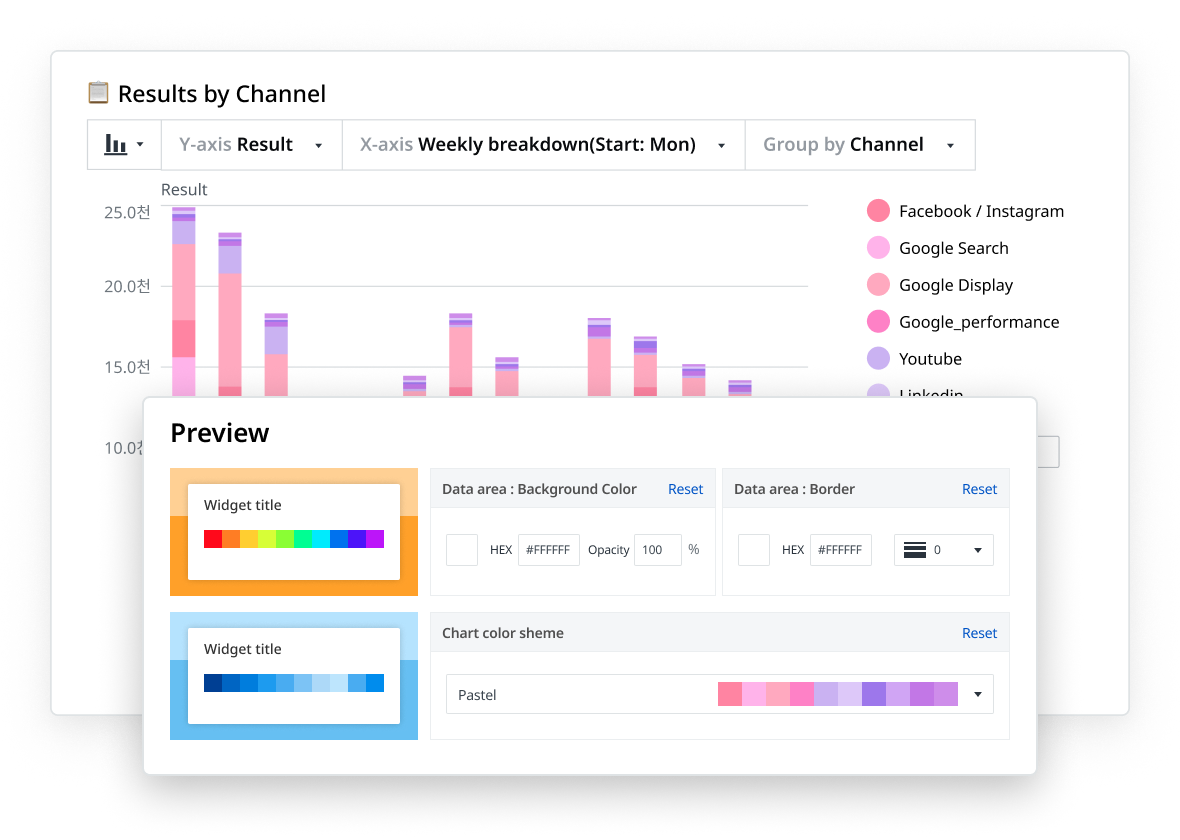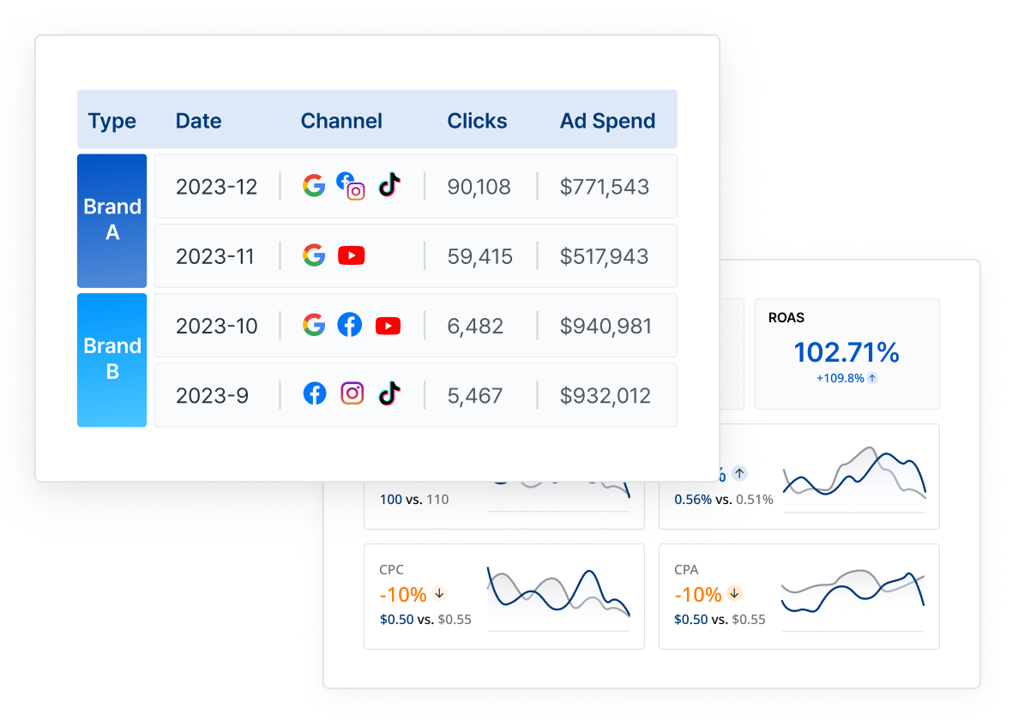Refer a partner and get paid! Earn 20% of all qualifying subscriptions referred to our team 👉

Learn More
Tired of spending countless hours on reporting? Break free from spreadsheets and create client reports in minutes.
Impress clients and scale up your marketing agency with our ready-made client reporting templates.



As your marketing agency grows, it becomes simply unsustainable to manage ad campaigns and client reports via Excel spreadsheets. Client progress reports can save you countless hours on data analysis and reporting while providing your clients the precise metrics and numbers that they need to know, such as ROAS and conversion rates.
Save up to 60 hrs/week with Adriel’s agency reporting dashboard. Manage all your clients data in one place, pounce on opportunities, and tie back your digital marketing efforts to the client's bottom line and profitability.
Creating a client report is as easy as 1-2-3 with Adriel. You just need to choose your data-source from a drop-down list and start using our ready-made templates or customize your own with interactive widgets and graphs. No coding and technical knowledge required.

Sign up for Adriel with your email after your demo.
You can then select a pricing plan that suits your needs.

Simply choose from a drop-down list to import dimensions and metrics from your ad accounts, analytics tools, and mobile measurement partners.

Use our ready-made templates to instantly see all your KPIs in minutes. Or, start from a blank page and choose your data visualization widgets and graph types.

If you’re a marketing agency, you want to be able to present different sets of information to different stakeholders.
Set up different views for each role or client on Adriel with different access restrictions in just a few clicks.

Need Google Analytics reports to share with clients or the C-suite team?
Determine your brand visuals, colors, and client logos, and download reports as PDFs or CSVs or get live links in minutes.
You should include all the important and previously agreed-upon KPIs of your social media campaigns, content marketing initiatives, and paid ads like Facebook Ads and Google Ads.
Here are some examples of key metrics to include:






Find out exactly how much each client is spending on ads. Gauge whether you’ve been over or under spending and make adjustments as necessary.
Uncover which marketing investments are paying off the most. Get actionable insights on which ad channels to focus on in the future.


Determine which campaigns generate the highest impressions and dissect the strategy behind them.
See how many people are visiting your clients’ websites or social media with a marketing data dashboard.
Track how much you’re paying to have a certain ad seen by a thousand people.
Monitor your advertising cost in real-time by keeping track of cost-per-click closely. Get alerts on your dashboard or in your email inbox when costs go above set budgets.
Report back accurate ROAS figures and strategize better for growth.


Discover the conversions generated from ads within minutes on a marketing report template.
Here is a snapshot of how these key performance metrics and goals look like on Adriel’s agency dashboard:

Drill down to ad spend and revenue by channel and analyze trends overtime.

See details of each metric by channel.

Get ad creative insights.





When reporting Meta Ads, you will want to visualize Instagram Ads and Facebook Ads performance side-by-side to understand how each platform is contributing to your digital marketing goals. Here’s how it looks like on Adriel’s report template:





Integrate all your paid ad channels’ results into one marketing reporting dashboard. Curious to know how your Meta, Google, or TikTok Ads are performing? Connect all of these platforms to Adriel, and in less than 5 minutes, show all of your paid campaign results in one unified dashboard. See our integrations page for more information.


Our software was expertly designed with powerful functions for marketers. But everything can be customized. Adriel’s flexibility allows you to change all aspects of the dashboard design and appearance. Impress your clients with a professional marketing reporting dashboard report for an expert brand image.
You can start from a blank page to create a marketing reporting dashboard, but what if you don’t have time? Our extensive pre-made marketing reporting dashboard library has everything you might need. Try Adriel, and you’ll have more time to research ways to increase conversion or optimize your landing pages.













.png)

Here's a thorough breakdown of the steps involved in client reporting:

A summary report is for the busy C-suite clients who may want to look at more high-level KPIs rather than diving deep into each little nook and cranny of the campaigns. So, a summary report includes only the most high-level KPIs, results, insights, and recommendations for going forward.

A client report form streamlines the workflow of creating a client report, ensuring consistency and uniformity across different reports over time and across clients. A client report form helps to communicate efficiently, monitor project progress, and make decisions.
